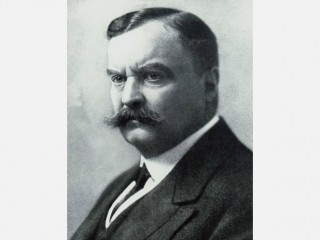
David Bruce biography
Date of birth : 1855-05-29
Date of death : 1931-11-20
Birthplace : Melbourne, Australia
Nationality : Australian
Category : Science and Technology
Last modified : 2011-02-17
Credited as : Pathologist, and parasitologist ,
The Australian parasitologist David Bruce discovered the causes of Malta, or undulant, fever and of sleeping sickness.
David Bruce was born on May 29, 1855, in Melbourne, Australia. His family went to Scotland when David was 5. He attended the medical school at Edinburgh University. In 1883 he married Mary Elizabeth Steele, who assisted him in his work throughout his life. Shortly thereafter Bruce was commissioned in the Royal Medical Service and was posted to Malta in 1884. There he studied a serious, often fatal disease, known as Malta or Mediterranean fever, which was prevalent among civilians and military personnel.
Malta fever is characterized by a continuous long-lasting fever which rises and falls irregularly, and which has been known in the Mediterranean region since the time of Hippocrates, who accurately described it. Within two years of his arrival in Malta, Bruce found a bacterium in the spleen of a number of fatal human cases of the disease. He named the organism Micrococcus melitensis because of its small size. He also found that human beings became infected from goats' milk and cheese and that abortions were common in diseased goats as well as in pregnant women who contracted the fever. This and later work led eventually to the eradication of the disease.
In 1894 Bruce went to Zululand, South Africa, where he studied nagana, a common disease of domestic animals. By 1895 he discovered trypanosomes, minute wormlike protozoans, living in the blood of sick cattle, and he showed that this parasite was transmitted by the bite of the tsetse fly. He had actually found a mixture of three species, which are now identified as Trypanosoma brucei (named after him), T. congolense, and T. vivax. Bruce's work was with animals at that time, and he was not directly concerned with human disease; but in 1890 trypanosomes were found in human blood and in 1901 were named T. gambiense.
A mysterious lethargy that had long been known in regions of tropical Africa first began to attract considerable attention when slaves exported to the West Indies often developed this disease. In Uganda alone in 1900, about two-thirds of the population died from it; they called it sleeping sickness. In 1902 the Royal Society sent a Sleeping Sickness Commission to Uganda, and one of its members, Aldo Castellani, reported finding trypanosomes in the cerebrospinal fluid of a patient. The following year a second commission was dispatched, with Bruce at its head. Following Castellani's lead and aided by his experience with nagana, Bruce proved that trypanosomes, transmitted by the tsetse fly, were the cause of sleeping sickness. Bruce was engaged in sleeping sickness investigations until 1911, when he was posted to the Royal Army Medical College, where during World War I he directed research on louse-carried trench fever and tetanus. He retired in 1919; he died on Nov. 20, 1931, in London.
















